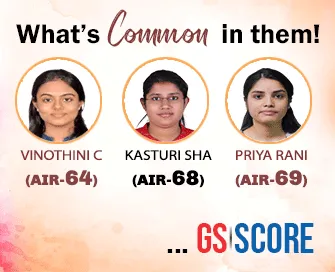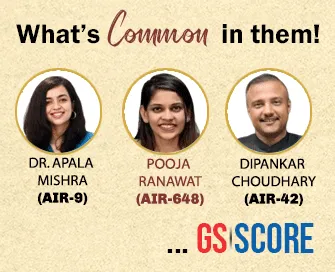

9th July 2025 (13 Topics)
Mains Issues
Context:
The Maharashtra government has withdrawn its decision to make Hindi the default third language in primary schools amid political uproar and public backlash.
Language Issue in India After Independence
- Constitutional and Historical Background
- Article 343(1): Declares Hindi in Devanagari script as the official language of the Union.
- Article 343(2): Allowed English to continue as an official language for 15 years (till 1965).
- Munshi-Ayyangar Formula (1949): A compromise formula that made Hindi the official language but allowed continued use of English temporarily.
- Gandhian Approach to Language
- Mahatma Gandhi supported Hindustani (blend of Hindi and Urdu) as a common language to bridge communal and regional divides.
- He emphasized linguistic harmony rather than linguistic dominance.
- Official Languages Act, 1963 and Amendments
- Passed to extend the use of English beyond 1965 due to massive opposition in non-Hindi states.
- Amendment in 1967 enabled bilingual communication between Centre and states (Hindi + English).
- Also provided for use of regional languages in administration and exams.
- Anti-Hindi Protests
- 1965 Anti-Hindi Agitation in Tamil Nadu marked a major political turning point.
- Violent protests forced the Centre to clarify that English would not be phased out, respecting federal linguistic diversity.
- Jawaharlal Nehru’s Assurance: Hindi would never be imposed on unwilling states.
- Three-Language Formula (1968 onwards)
- Implemented through education policies to balance linguistic unity and diversity.
- In Hindi-speaking states: Hindi, English, + one modern Indian language.
- In non-Hindi-speaking states: Regional language, English, + Hindi.
- Aimed to promote inter-regional understanding, yet faced uneven implementation.
- Linguistic Reorganisation of States
- Initial resistance from Nehru post-Partition due to fears of balkanization.
- Andhra Pradesh became the first linguistic state in 1953 after PottiSriramulu’s death due to hunger strike.
- States Reorganisation Act, 1956 created linguistic states across India.
- Reinforced the role of language in identity, administration, and democracy.
- Why Language Became a Sensitive Issue
- Cultural Identity: Language represents ethnic and regional identity.
- Access to Education & Jobs: Citizens prefer administration in their mother tongue for clarity and efficiency.
- Fear of Domination: Non-Hindi states feared homogenization and loss of linguistic diversity.
- The National Language Debate
- India has no National Language (as clarified by Ministry of Home Affairs).
- Hindi is the official language,English is an associate official language.
- Challenges with Hindi as National Language:
- Multiple dialects (e.g., Bhojpuri, Maithili).
- Script and numeral unfamiliarity.
- Cultural and historical influence from Persian, Urdu, English.
- Alternatives proposed:
- English for neutrality.
- Hindustani or Sanskrit for pan-Indian appeal.
- Eighth Schedule and Recognition of Regional Languages
- Eighth Schedule contains 22 officially recognized languages (originally 14).
- Grants eligibility for:
- Public exams (like UPSC).
- Use in legislatures and courts.
- Development under Article 351.
- Benefits of an Official/National Language (if adopted voluntarily)
- Administrative efficiency across the Union.
- Unified identity in international forums.
- Cost-effective governance through linguistic standardization.
- However, any national language must be voluntarily adopted, not imposed.


Mains Issues
Context:
Prime Minister Narendra Modi undertook a 9-day, 5-nation diplomatic tour from 1st to 9th July 2025, covering Ghana, Trinidad & Tobago, Argentina, Brazil, and Namibia.
The Global South
- The term Global South refers to countries in Africa, Latin America, Asia, and Oceania with shared post-colonial experiences and aspirations for development and equity in global governance.
- These nations are increasingly assertive in shaping international priorities around climate justice, digital equity, and economic independence.
- India positions itself as a natural leader and voice of the Global South, promoting South-South cooperation, capacity building, and reformed multilateralism.
Strategic Objectives of the visit:
- Reinforce Development Partnerships through sustainable infrastructure, technology transfer, and capacity building.
- Strengthen India’s Leadership role in multilateral platforms such as BRICS, G20, and the UN.
- Enhance Mineral and Energy Security by securing strategic minerals and expanding clean energy cooperation.
- Promote Digital Diplomacy via Indian public digital infrastructure models (e.g., UPI, CoWIN, DigiLocker).
- Deepen Diaspora Engagement to boost people-to-people ties and India’s soft power.
Country-Wise Visit:
- Ghana
- First visit by an Indian Prime Minister in over 30 years.
- Focus Areas:
- Strategic minerals: Bauxite and manganese for clean energy.
- Health and energy partnerships.
- Diaspora engagement with 15,000+ Indian-origin residents.
- Emphasized democratic solidarity and long-term development cooperation.
- Trinidad & Tobago
- Commemorated 180 years of Indian heritage.
- First bilateral visit since 1999.
- Key Initiatives:
- Collaboration on digital health platforms, telemedicine, and e-governance.
- Focus on climate resilience and disaster preparedness.
- Celebration of diaspora culture strengthens India's soft power diplomacy.
- Argentina
- First bilateral visit by an Indian PM in 57 years.
- Strategic Focus:
- Lithium mining in the Lithium Triangle (Argentina–Bolivia–Chile).
- Agriculture, space cooperation, and AI governance.
- Critical for India’s EV battery supply chain and energy transition.
- Strengthening trade and technological cooperation despite ideological differences.
- Brazil
- Attended the 17th BRICS Summit in Rio de Janeiro.
- Key Themes:
- Multilateral reform, AI ethics, climate finance, and inclusive global governance.
- Bilateral discussions in Brasilia focused on:
- Defence cooperation
- Biofuels and sustainable agriculture
- Space technology
- Reaffirmed the India-Brazil Strategic Partnership.
- Namibia
- Third visit by an Indian Prime Minister; first by PM Modi.
- Key Focus Areas:
- Renewable energy: Solar and green hydrogen.
- Wildlife diplomacy: Extension of cheetah translocation program.
- Digital governance and vocational training support.
- Symbolized anti-colonial solidarity and future-focused development.
Key Strategic Themes Emerging from the visit:
- Minerals and Energy Diplomacy
- Securing critical minerals like lithium, bauxite, manganese vital for India’s energy and EV ambitions.
- Emphasis on sustainable mining, value addition at source, and technology sharing.
- Digital Public Infrastructure Cooperation
- Export of India’s successful digital platforms like UPI, DigiLocker, and CoWIN.
- Focus on bridging the digital divide in the Global South.
- India redefined as a knowledge-sharing development partner, not merely a donor.
- Climate Resilience and Environmental Diplomacy
- Bilateral cooperation on green hydrogen (Namibia), biofuels (Brazil), and climate-smart agriculture (Argentina).
- Promotes community-led, context-sensitive climate solutions aligned with India’s sustainability goals.
- South-South Cooperation and Multilateral Reform
- India’s leadership in BRICS+ and G20 strengthens Global South’s presence in global institutions.
- Advocates for UN, WTO, IMF reform and equitable global governance frameworks.
- Acts as a bridge-builder between developing and developed worlds.


Mains Issues
Context:
President Trump announced a 50% tariff on copper imports and threatened up to 200% tariffs on pharmaceutical imports during a cabinet meeting on July 8, 2025. This aims to bolster domestic production but raises concern over trade tensions and price inflation
India–US Relations
Evolution of India–US Relations
- Cold War Era Divergence
- India pursued a policy of Non-Alignment, while the United States aligned more closely with Pakistan as a strategic partner in South Asia.
- Bilateral ties remained limited due to ideological differences and geopolitical rivalry during the bipolar world order.
- Post-Cold War Engagement
- With the end of the Cold War and India’s economic liberalization in 1991, diplomatic engagement between the two countries expanded significantly.
- The 2005 Civil Nuclear Agreement marked a transformational moment, enabling India to access civil nuclear technology and formalizing strategic cooperation.
- Strategic and Defence Agreements Signed
- LEMOA (2016): Enabled reciprocal logistics support between armed forces.
- COMCASA (2018): Facilitated encrypted communication and equipment interoperability.
- BECA (2020): Enabled real-time geospatial intelligence and navigation data sharing.
- GSOMIA (2002): Allowed the secure exchange of classified military information.
Significance of Bilateral Relations
- Economic Engagement
- The United States was India’s second-largest trading partner in 2023.
- Bilateral trade witnessed a 72% increase between 2017–18 and 2022–23.
- Sectors involved: pharmaceuticals, defence, IT services, energy, and agriculture.
- Defence Cooperation
- India was designated as a “Major Defense Partner” in 2016.
- Joint military exercises include YudhAbhyas, Malabar, and Tiger Triumph (first tri-service).
- US companies have collaborated in co-developing critical defence platforms with Indian manufacturers.
- Technological and Innovation Collaboration
- Launch of India–US Initiative on Critical and Emerging Technology (iCET) in 2023.
- Focus areas: AI, quantum computing, semiconductors, 5G, space, and cybersecurity.
- Establishment of INDUS-X to link defence startups, academia, and investors across both nations.
- Cultural and Educational Ties
- Over 200,000 Indian students are studying in the US.
- The Indian-American diaspora exceeds 4 million, strengthening people-to-people connections.
- Academic collaborations between major institutions enhance mutual understanding.
- Climate and Clean Energy Cooperation
- India and the US are partners in the Clean Energy Agenda 2030.
- Joint commitments under Mission Innovation and cooperation on green hydrogen, solar, and biofuels.
- Multilateral and Strategic Cooperation
- Both countries are members of QUAD, advocating a free, open, and rules-based Indo-Pacific.
- Cooperation includes vaccine diplomacy, maritime domain awareness, infrastructure development, and cybersecurity.
Recent Developments and Forthcoming Initiatives
- Security of Supply Arrangement (SOSA): Aims to ensure stable and predictable defence equipment supply from the US to India.
- Reciprocal Defence Procurement (RDP) Agreement: To improve market access for Indian defence manufacturers and streamline acquisition procedures.
- Joint Production Initiatives: Includes collaboration on Stryker Armoured Vehicles and GE-F414 fighter jet engines.
- Public–Private Innovation Partnerships: Establishment of joint innovation funds and incubators under DARPA and Defense Innovation Unit (DIU).
- Streamlining Export Controls and Licensing: India’s STA-1 status aids faster access to controlled defence technologies.
Bilateral dialogue is ongoing to ease ITAR and EAR
Challenges in India–US Relations
- Trade Imbalances and Tariff Disputes: Contentions over agricultural subsidies and tariffs on steel/aluminium persist.
- Data Privacy and Localization: The US prefers free data flow, while India advocates data localization under its Data Protection Law.
- Defence Procurement Delays: Complex regulatory procedures and pricing concerns slow execution of deals, e.g., MQ-9B drone acquisition.
- Visa and Immigration Policies: Restrictions on H-1B visas affect Indian IT professionals and cross-border talent mobility.
- Geopolitical Divergences: Differences over policies on Russia, Iran, and Afghanistan sometimes lead to strategic divergence.
Way Forward
- Resolving Trade Barriers: Negotiating reduced tariffs and increasing market access for both sides.
- Enhancing Technology and Cyber Cooperation: Creating a Cybersecurity Forum and harmonizing data protection standards.
- Streamlining Defence Procurement: Strengthening frameworks like the Defense Technology and Trade Initiative (DTTI).
- Relaxation in Visa Policies: Enhancing access to H-1B visas for Indian tech professionals.
- Strengthening Multilateral Engagements: Expanding cooperation in Indo-Pacific security, counter-terrorism, and global rule-making in AI and space.
|
PYQ: Q. Discuss the evolution of India-US defence cooperation in recent decades. What are the challenges that need to be addressed to deepen this strategic partnership? (2020) |


Mains Issues
Context:
The Union Minister for Commerce and Industry recently highlighted the need to shift India’s startup landscape from surface-level business model innovation to Deep Technology (DeepTech), emphasising fundamental scientific research and engineering-driven entrepreneurship.
DeepTech
- DeepTech refers to innovations that are founded on significant scientific or engineering advances. Unlike business-model innovations, DeepTech aims to solve real-world, complex problems using fundamental research and original product design.
Core Fields:
- Artificial Intelligence (AI) hardware and software
- Robotics and automation
- Internet of Things (IoT)
- Material sciences and quantum mechanics
- Power electronics and semiconductor design
- Molecular drug discovery and medical technologies
Key Issues for a DeepTech Ecosystem
- Product Mindset Deficit
- India has not yet produced a globally acclaimed industrial or consumer product.
- Reliance remains on foreign tech platforms (e.g., TensorFlow, Android).
- China’s ascent in DeepTech began with reverse engineering followed by strategic R&D investment.
- R&D Culture
- DeepTech demands a long-term, failure-tolerant approach to innovation.
- Requires founders with technical depth; e.g., Google (Larry Page), Tesla (Elon Musk), NVIDIA (Jensen Huang).
- Indian startups need to prioritise in-house technological creation over outsourcing.
- Educational Reforms Needed
- Current curricula focus on tool-based learning rather than first-principle engineering and science.
- Need to integrate multi-disciplinary learning (e.g., AI + Material Science + Healthcare).
- Adopt models from MIT/Stanford that emphasise theory + application.
- Supportive Infrastructure
- DeepTech needs access to prototyping labs, precision testing centres, and certification facilities.
- MSMEs and startups cannot afford such infrastructure individually.
- Policy and Funding Framework
- Agencies like NRDC must expand support beyond incubators.
- Evaluation should be based on technical merit, roadmap, and R&D depth, not location.
- Promote academia–industry collaboration, seed capital for hardware startups, and test beds.
Way Forward: DeepTech as Strategic National Asset
- Policy Measures:
- Launch a National DeepTech Mission under NITI Aayog
- Increase public R&D spending (currently ~0.7% of GDP; target 2%)
- Fast-track access to global patent networks and IP protection
- Incentivise faculty-led startups and student research translation
- Facilitate cross-border collaboration with institutions like DARPA, Horizon Europe
- Institutional Steps:
- Establish DeepTech Centres of Excellence in IITs/NITs
- Reform AICTE/UGC guidelines to include research credits and industry internship mandates
- Encourage PSU and private sector co-investment in DeepTech R&D consortia


Prelims Articles
Context:
The Bihar Cabinethas approved the application of the domicile rule to the existing 35% reservation for women in all state government jobs, marking a significant policy shift before the upcoming state elections.
Policy Overview
- In January 2016, Bihar introduced 35% horizontal reservation for women across all state government jobs.
- Until now, the domicile requirement was not applied to this quota, allowing women from outside Bihar to avail the benefit.
- As of July 2025, only women who are domiciled residents of Bihar will be eligible under this 35% quota.
Domicile Criteria in Bihar
To qualify as a domicile of Bihar, a person must fulfill at least one of the following:
- Continuous residence in the state for three years or more.
- Ownership of property or land in the state.
- In case of women, marriage to a domiciled resident of Bihar.
- Voter ID is desirable but not mandatory.
|
Vertical and Horizontal Reservation: Vertical Reservation
Horizontal Reservation
Application Mechanism
|


Prelims Articles
Context:
Karnataka has sought the Centre’s approval for key water projects—Yettinahole, Kalasa-Banduri, and Upper Bhadra—and urged notification of the Krishna Water Disputes Tribunal-II award amid legal, environmental, and funding hurdles.
Yettinahole Project:
- Located in the Western Ghats region of Hassan district, it is a drinking water project aimed at diverting water from west-flowing streams to the drought-prone eastern districts of Karnataka.
- Issue: Facing objections from the Ministry of Environment and Forests (MoEF) regarding diversion of 423 acres of forestland. The state has proposed compensatory afforestation through revenue land acquisition.
Kalasa-BanduriNala Project:
- Objective: To divert water from the Mahadayi River (also called Mandovi in Goa) to meet drinking water needs in Belagavi, Dharwad, and Gadag
- Inter-State Dispute:Goa has raised objections, citing ecological and water-sharing concerns. The case has been politically and legally contentious for years.
Upper Bhadra Project:
- Type:Major lift irrigation project to irrigate drought-prone regions.
- Districts Covered:Chikkamagaluru, Chitradurga, Tumakuru, and Davanagere.
- Project Cost: ?21,473 crore;
- Expected Benefit: Irrigation of 25 lakh hectares.
- Issue: Although ?5,300 crore was allocated, the Centre has not released funds yet.
Krishna Water Disputes Tribunal-II Award:
- Karnataka is seeking notification (gazette publication) of the award which decides water sharing among Maharashtra, Karnataka, Andhra Pradesh, and Telangana.
- Non-notification hinders the implementation of state-level irrigation policies.
Constitutional and Statutory Framework:
- Inter-state river water disputes are governed by Article 262 and the Inter-State River Water Disputes Act, 1956.
- Environmental approvals are under Forest (Conservation) Act, 1980 and Environment Protection Act, 1986.


Prelims Articles
Context:
Prime Minister Narendra Modi was conferred the “Grand Collar of the National Order of the Southern Cross”—Brazil’s highest civilian honour for foreign dignitaries—during the 17th BRICS Summit 2025 in Rio de Janeiro, recognising India-Brazil strategic ties.
About the National Order of the Southern Cross:
- Instituted: 1822 by Emperor Pedro I of Brazil.
- Type: Brazil’s highest national honour conferred exclusively on foreign nationals.
- Classes: The “Grand Collar” is the highest grade in the Order.
- Eligibility: Heads of State, Heads of Government, and other foreign dignitaries.
India-Brazil Bilateral Relations:
- Established: Formal diplomatic relations in 1948.
- Both are members of BRICS, G20, IBSA, and BASIC groupings.
- The relationship was elevated to a Strategic Partnership in 2006 during President Lula’s earlier term.
- Areas of cooperation include: bioenergy, agriculture, space, defence, climate diplomacy, and UN reform.
Other Global Honours Conferred on PM Modi:
- Order of Zayed – UAE (2019)
- Order of St. Andrew the Apostle – Russia (2019)
- Legion of Merit – USA (2020)
- Order of the Nile – Egypt (2023)
- Order of the DrukGyalpo – Bhutan (2021)


Prelims Articles
Context:
The Great Hornbill, Kerala’s State Bird and typically a forest-dwelling species, was recently sighted in the coastal region of Kakkampara near Ezhimala in Kannur district — an unusual habitat for the species, raising ecological and conservation interest.
Species Overview:
- Common Name: Great Hornbill (MalamuzhakkiVezhambal)
- Scientific Name:Bucerosbicornis
- Conservation Status:
- IUCN: Endangered
- Indian Wildlife Protection Act, 1972: Schedule I species (highest protection)
Typical Habitat and Distribution:
- Found in evergreen and moist deciduous forests across the Western Ghats and parts of Northeast India.
- Common in forest areas such as Silent Valley, Nelliampathy, Aralam, Athirappilly, and Parambikulam.
- Very rarely seen in coastal areas, making this sighting ecologically significant.
Ecological Significance:
- Great Hornbills are indicator species, reflecting the health of forest ecosystems.
- Their diet of fruits plays a crucial role in seed dispersal and forest regeneration.


Prelims Articles
Context:
A British F-35B stealth fighter jet from the UK’s Carrier Strike Group made an emergency landing in Kerala due to a technical malfunction and is being repaired with support from Indian authorities.
5th-Generation Fighter Jet:
- Fifth-generation (5G) fighter jets are advanced combat aircraft designed for air superiority and strike roles in highly contested environments. They are built with stealth, advanced avionics, and multirole versatility.
Key Capabilities:
- Stealth Design: Multi-spectral low observability to avoid radar, infrared, and visual detection.
- Supercruise: Ability to fly at supersonic speeds without afterburners.
- Sensor Fusion: Integrated sensors and data fusion for real-time battlefield awareness.
- Network-Centric Warfare: High interoperability with other platforms (land, sea, air, and space).
- Electronic Warfare: Equipped with radar jamming, self-protection, and decoy capabilities.
- Advanced Weapons Integration: Internal weapons bays for reduced radar signature.
Current Global Operators:
- F-22 Raptor (USA)
- Role: Air Superiority Fighter
- Developer: Lockheed Martin for the U.S. Air Force
- Key Features:
- First operational 5th-generation stealth fighter.
- Prioritizes stealth, supercruise, advanced avionics, and agility.
- Highly maneuverable with thrust-vectoring nozzles.
- F-35 Lightning II (USA)
- Role: Multirole Stealth Fighter
- Developer: Lockheed Martin for U.S. and allied forces
- Variants:
- F-35A – Conventional takeoff and landing (CTOL) for the U.S. Air Force.
- F-35B – Short takeoff/vertical landing (STOVL) for the U.S. Marine Corps.
- F-35C – Carrier-based variant for the U.S. Navy.
- Key Features:
- Stealth, advanced data fusion, sensor integration, and network-centric warfare capabilities.
- Extensive global user base including NATO allies and partners like Japan, Australia, and Israel.
- Sukhoi Su-57 (Russia)
- Role: Multirole Stealth Fighter (Air superiority + Ground attack)
- Developer: Sukhoi, under United Aircraft Corporation
- Key Features:
- Stealthy design with super-maneuverability and advanced avionics.
- Equipped with radar-absorbing materials and internal weapon bays.
- Emphasis on agility using thrust-vectoring engines.
- KF-21 Boramae (South Korea)
- Role: Multirole Fighter (4.5 to 5th-generation hybrid)
- Developer: Korea Aerospace Industries (KAI), in partnership with Indonesia
- Key Features:
- Incorporates stealth shaping, AESA radar, and internal weapon integration in later phases.
- Intended as a cost-effective alternative to F-35 with scalable upgrades.
- Future variants expected to evolve into full 5th-gen status.
- HAL AMCA (India)
- Role: 5th-Generation Stealth Multirole Fighter (Under development)
- Developer: Hindustan Aeronautics Limited (HAL) and Defence Research and Development Organisation (DRDO)
- Key Features:
- Designed with stealth shaping, internal weapon bays, supercruise capability, and AI-assisted avionics.
- Targeted to achieve both air superiority and deep-strike capabilities.
- May integrate 6th-gen features in later Mk2 versions (e.g., directed energy weapons, manned-unmanned teaming).
Strategic Need for India
- IAF Fighter Strength:
- India currently operates ~30 fighter squadrons, short of the sanctioned strength of 42.
- The phasing out of legacy platforms like MiG-21s, MiG-29s, Jaguars, and Mirage 2000s necessitates rapid modernization.
- Regional Security Context:
- China: Operates over 3,300 aircraft, including 5G platforms like J-20.
- Pakistan: Operates around 1,430 aircraft, with close military ties with China.
- India: Operates about 2,300 aircraft, but many are older-generation fighters.
- Operational Urgency:
- With two hostile fronts (China and Pakistan), India requires enhanced air power with stealth, long-range strike, and survivability features.
- Indigenous development of 5G aircraft enhances strategic autonomy and reduces reliance on foreign imports.


Prelims Articles
Context:
Researchers at the National Institute of Plant Genome Research (NIPGR) have successfully used CRISPR-Cas9 gene editing to enhance phosphate uptake and transport in japonica rice by modifying a phosphate transporter gene (OsPHO1;2), potentially reducing fertilizer use and increasing crop yield.
CRISPR-Cas9 Technology in Agriculture:
- CRISPR-Cas9 is a precision gene-editing tool derived from Streptococcus pyogenes, enabling targeted modification of DNA without introducing foreign genes.
- NIPGR researchers used CRISPR-Cas9 to knock out a 30-base pair binding site of a repressor gene (OsWRKY6), enhancing expression of the phosphate transporter OsPHO1;2 in rice.
- This increased phosphate translocation from root to shoot, boosting yield without altering seed quality.
Impact on Fertilizer Use and Yield:
- Gene-edited lines showed:
- 20% yield increase at standard phosphate fertilizer doses.
- 40% yield increase even with just 10% of the recommended phosphate dose.
- This helps address the issue of low phosphorus use efficiency, as typically only 15–20% of applied phosphate is absorbed by plants.
India’s Fertilizer Dependency:
- India is heavily dependent on imports for phosphate fertilizers.
- Developing indigenous high-efficiency varieties can promote nutrient use efficiency and reduce environmental runoff.
Regulatory and Biosafety Aspects:
- Concerns around off-target effects and foreign DNA integration are being addressed:
- Off-target edits were tested with in-silico tools—no unintended mutations were detected.
- Foreign bacterial DNA (e.g., Cas9 and vector DNA from Agrobacterium tumefaciens) is removed via Mendelian segregation in subsequent generations.
Scientific Significance:
- Marks India’s leadership in plant gene editing, particularly in rice.
- If extended to indica rice cultivars, it may revolutionise phosphate management in Indian agriculture, where phosphorus deficiency is common in alkaline and acidic soils.


Editorials
Context:
At the June 2025 NATO Summit, member states pledged to raise defence spending to 5% of GDP by 2035, a sharp increase from the earlier 2% target. This decision reflects a rising global trend in militarisation amid ongoing conflicts, but raises concerns over its implications for development, health, and climate goals.
GLOBAL TRENDS IN MILITARY SPENDING
- Record Global Military Expenditure in 2024: According to SIPRI, global military spending reached $2.718 trillion in 2024, registering a 4% annual increase, the sharpest rise since 1988. Conflicts like the Russia-Ukraine war and Israel-Gaza tensions were major contributors.
- Concentration Among Few Countries: The top five spenders—USA ($997 bn), China, Russia, Germany, and India—accounted for the bulk of global military expenditure. NATO’s 32 members alone spent $1,506 billion, nearly 55% of the world total.
- Spending as % of GDP: Wide Disparities: Among non-warring nations, Saudi Arabia (7.3%), Poland (4.2%), and USA (3.4%) are the highest spenders relative to GDP. In contrast, several NATO members still failed to meet the earlier 2% target set in 2002.
OPPORTUNITY COST OF MILITARY SPENDING
- Undermining of Social Sectors: Studies show a crowding-out effect of military expenditure on health spending, particularly in low- and middle-income countries (LMICs). Even Spain rejected the 5% NATO target citing potential cuts to welfare.
- Impact on Global Development Goals: The UN’s annual budget is only $44 billion, dwarfed by global defence spending. Just $70–325 billion/year could end extreme poverty, a fraction of the current military outlays.
- Military-Climate Nexus: According to the Conflict and Environment Observatory, a 5% defence GDP target by NATO could add 200 million tonnes of CO? annually, derailing climate mitigation targets under the SDG framework.
IMPLICATIONS FOR INDIA AND GLOBAL SOUTH
- India's Rising Defence Allocations: Following Operation Sindoor, India sanctioned ?50,000 crore in emergency defence purchases, in addition to its ?6.81 lakh crore defence budget (2.3% of GDP). In contrast, public health expenditure remains low at 1.84% of GDP.
- Fiscal Pressure on LMICs: Countries like Ukraine (34%) and Lebanon (29%) spent disproportionately on defence, weakening their economies. If India follows a similar trajectory, it may undermine public investment in essential services.
- Disproportionate Threat Perception: Despite NATO citing Russia as a key threat, Russia’s economy is 25 times smaller and military spending 10 times lower than NATO’s. This reflects the use of strategic fear-mongering to push remilitarisation agendas.
Practice Question:
"Rising global militarisation poses serious trade-offs for achieving Sustainable Development Goals. Critically examine in the context of recent NATO defence spending commitments." (250 words)


Editorials
Donald Trump’s unilateral policies signal a shift toward a "rogue superpower" U.S., posing key diplomatic challenges and strategic recalibrations for India.
Rise of American Unilateralism under Trump
- Rejection of Traditional Multilateralism: Trump's approach moves away from global leadership toward transactional nationalism, rejecting institutions like WTO and bypassing global trade norms in favour of selective bilateral deals.
- Structural Advantages Fueling Unilateralism: The U.S. has demographic resilience, energy sufficiency, and technological superiority, which allow it to operate independently of traditional allies and reshape supply chains through reshoring and automation.
- Political Backing from MAGA Coalition: Trump’s domestic political base supports protectionism, reduced military commitments abroad, and aggressive immigration control, fundamentally altering the nature of U.S. international engagement.
Strategic Impact on India-U.S. Bilateral Engagement
- India Navigates Tariff and Trade Pressures: India is classified in the "deal-making" category, actively negotiating trade agreements while managing the pressures of U.S. tariff policies and potential designations.
- Pragmatic Handling of Immigration and Alliances: Despite Trump's anti-immigration rhetoric, India has maintained its composure and continued cooperation in key sectors, understanding the difference between White House posturing and institutional stability.
- Diversification of Strategic Engagement: India’s strategic outreach through BRICS, SCO, and bilateral partnerships serves as a hedge against American unpredictability, even as Delhi balances ties with Washington on trade, defense, and geopolitics.
Need for Intellectual Realignment in India's U.S. Policy
- Inadequate Understanding of U.S. Political Shifts: Indian strategic circles often underestimate the systemic changes occurring in U.S. domestic politics and their effect on foreign policy direction and alliance structures.
- Need for New Channels of U.S. Engagement: India must broaden its base of engagement beyond the traditional liberal policy circles in the U.S. to include voices aligned with evolving political realities like MAGA priorities.
- Institutionalizing Study of Contemporary America: Delhi should invest in long-term research and academic focus on American politics, economics, and society to formulate adaptive foreign policy strategies amidst changing U.S. global behavior.
Practice Question:
The rise of American unilateralism under recent administrations has challenged the post-WWII global order. Critically evaluate how India’s foreign policy must adapt to the structural and ideological shifts in U.S. domestic politics. (250 words)


Editorials
Context:
The Union Cabinet recently approved a ?1-lakh crore Research, Development and Innovation (RDI) scheme, to be anchored by the Anusandhan National Research Foundation (ANRF). The aim is to increase private sector participation in basic scientific research, with a long-term goal of reversing the existing 70:30 public-private R&D funding ratio.
The RDI Scheme and ANRF Framework
- ANRF as a Central Hub: The ANRF is designed as a single-window mechanism for funding research across Indian academia, universities, and private institutions, modeled to streamline fragmented R&D efforts.
- Public-Private Responsibility: The scheme envisions 70% of ANRF funding from private sources, while offering low-interest loans for TRL-4 and above innovations, signifying a shift from grants to credit-based support.
- Redefining Stakeholder Roles: By attempting to reduce government dominance in R&D investment, the scheme signals a paradigm shift toward private-led innovation ecosystems, mirroring models in developed economies.
Critical Concerns and Design Limitations
- Technology Readiness Level (TRL) Restriction: The eligibility is limited to TRL-4 or above, excluding early-stage or foundational research, which might deter genuinely innovative but untested ideas, risking exclusion of transformational breakthroughs.
- Missing the Role of State-driven Risk Capital: The design fails to replicate the military-industrial innovation complex of the U.S. and EU where government funds high-risk, high-cost innovation with potential for both military and civilian benefits (e.g., Internet, GPS).
- Brain Waste and Inadequate Research Infrastructure: India continues to lose top scientific talent to the West, due to the lack of attractive, well-funded, and risk-tolerant research ecosystems domestically; RDI cannot solve this without academic and infrastructural reforms.
Deeper Structural Bottlenecks
- Weak Domestic Manufacturing: India lacks a high-precision, skilled manufacturing base to convert laboratory innovations into scalable products, which undermines the end-to-end innovation pipeline.
- Fiscal Constraints: A budgetary infusion, even one as ambitious as ?1 lakh crore, cannot compensate for decades of underinvestment in scientific manpower development, institutional autonomy, and foundational research quality.
- Risk Aversion: The scheme’s low appetite for risk and preference for mature technologies reflects an administrative conservatism inconsistent with the needs of radical innovation or disruptive technologies.
Practice Question:
India's efforts to enhance private sector investment in scientific research have often fallen short due to structural, financial, and institutional bottlenecks. Critically evaluate the recently launched ?1 lakh crore Research, Development and Innovation (RDI) scheme in this context. Also, suggest measures to improve the innovation ecosystem in India. (250 words)




